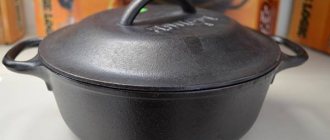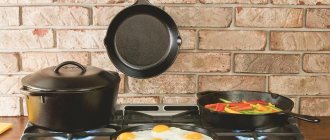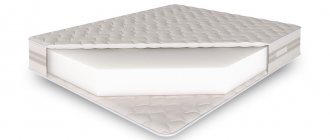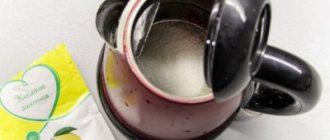Tea is a drink of eternal youth and longevity, which is in particular demand, since it is indispensable in the complete diet of people of all age categories. This is why you need to choose a good quality kettle so that the device can serve for many years. And having purchased a kitchen product, you should prepare it for further use before inviting family and friends for tea. Washing a new kettle before first use is not difficult and does not require much time.
How to get rid of the unpleasant smell of plastic?
And there are several of these methods:
- Take three or four whole lemons and squeeze the juice into the kettle itself. ...
- You can also use the same lemon, but not its juice, but its peel. ...
- Another option, to combat the unpleasant odor
of plastic, you can use table vinegar or nine percent vinegar essence.
Interesting materials:
What does the presence of starch in stool mean? What does the name Amsterdam mean? What does the name Pathetic mean? What does the name of the Tobol River mean? What does a network security key mismatch mean? What does low blood pressure mean? What does low Fibrinogen mean? What does low cortisol mean? What does a low prothrombin index mean? What does low heart rate mean?
Why is it important to wash a kettle after purchase?
A kettle is an indispensable kitchen appliance that is used by people every day. In order for the water consumed to bring only benefits, and drinking tea to be a pleasure, it is necessary that the product does not emit foreign odors.
Treating a new kettle after purchase is necessary for a number of reasons:
- Cheap plasticizers, low-quality chemical additives and coloring pigments used by the manufacturer in the manufacture of kitchen products.
- Long-term storage of the device in sealed packaging.
- The presence of process oil on the surfaces inside the kitchen product.
If the kettle has a distinct plastic smell, then this is an indicator of poor quality, and you should discard such a purchase and pay attention to other models.
During operation, such a product will release toxins and other hazardous substances into the water, which will harm human health.
How long should you boil an electric kettle?
Suitable for the most neglected condition of the kettle. Pour water into the kettle, add a spoonful of baking soda (tablespoon), boil the solution, and drain the water. Next, add water again, but with citric acid (1 tablespoon per kettle). Boil for about half an hour over low heat.
Interesting materials:
By whom and when was double fertilization discovered in flowering plants? Who are the Cossacks? How are my brother's children related to me? What can you become after graduating from international relations? How are the children of siblings related to each other? Who is my son's cousin's daughter related to? Who makes appointments to the position of district court judge? Who did the Homeless Man become at the end of the novel? When did 28 Panfilov Heroes accomplish a feat near Moscow? When does acacia produce nectar?
Where does the unpleasant “aroma” come from and what does it mean?
To understand whether using a “flavored” teapot is dangerous in each specific case, you need to delve into the problem a little deeper. Let's look at the most common causes of unpleasant odor, namely:
- Not ventilated. The first and safest reason for the appearance of odor is the tight factory packaging. The smell of plastic simply does not have time to dissipate from the new product and ends up in your home along with your purchase. Of course, at the factory no one will ventilate the kettles in the fresh air, but you can do this at home with ease. If the smell is gone, the product is of high quality.
- Low quality materials. An unpleasant-smelling kettle may be made of low quality plastic. It is clear that products made from high-quality material are more expensive, but health is priceless. Some unscrupulous manufacturers are trying to save on materials at the expense of consumer health. The food-grade plastic from which such products should be made has no odor, but is also more expensive. In addition, the kettle is constantly exposed to high temperature loads, and in order to extend its service life, many plasticizers and dyes are added to the plastic composition. Without the latter, the appearance will leave much to be desired. If these impurities are of low quality, odor is also inevitable. The most unpleasant thing in this story is that this cocktail, when heated, safely dissolves in water, making it a slow poison for any human body.
- It's time to change. It happens that the kettle has served you faithfully for some time, giving you no reason to doubt its safety. And it doesn’t matter - a week or five years - such symptoms can appear at any time. There was no smell and then suddenly it appeared one fine morning, ruining the user’s mood and appetite. This phenomenon indicates that the plastic of the kettle has already served its purpose and has begun to gradually disintegrate, dissolving directly in the water. In this case, you need to go for a new kitchen assistant as soon as possible.
Like any chemicals, plastic particles dissolved in water can be hazardous to health. We are, of course, talking about cheap raw materials, which at the same time have their own specific smell. Food grade plastic, as stated above, does not smell and does not pose a health hazard.
If the kettle smells like plastic, clean it with lemon
First of all, you need to thoroughly boil the water in the new kettle; it must certainly be filled with water to the very top. Fifty grams of citric acid should be added to the water. There is a more expensive, but also more effective way: squeeze the juice from three lemons. After this, you need to boil water in a kettle with this juice and then just leave the water like that without pouring it out overnight. In the morning, pour out this water, pour in new water, then boil, then thoroughly wash the kettle. In the evening you can repeat this process again. Lemon juice will even help remove bad odors from the refrigerator - we already wrote about this.
When a new kettle smells like plastic and you need to eliminate this unpleasant odor, you can also use just lemon peels; this is also quite effective, but a more budget-friendly method than lemon juice. To do this, fill the kettle approximately halfway with regular lemon peels, and fill the water to the top. First you just need to boil the kettle, and after boiling you need to leave the kettle with water, with all the peels, lemon peels, overnight. In the morning, you need to boil this kettle with water again, then drain the water and thoroughly rinse the inside of the kettle under running water. You can cleanse with lemon juice one day, and use the lemon juice the next day. This is rational and will give a good result.
If suddenly, for some reason, you don’t have any lemons, or their peels, or even citric acid on hand, then you can completely use the essence of vinegar, or even simple table vinegar. You should add 100 grams of simple table vinegar or 40 grams of vinegar essence to your kettle and then fill it with water to the very top. After this, the kettle must be heated, but in a situation with vinegar it cannot be boiled, just as when using vinegar, a natural reaction must occur when water boils, and then the water will be spilled through the top of the vessel. This simple operation should be done several times in a row, and only after you have already poured out the water, rinse your kettle thoroughly.
How to harden enamel cookware?
New enamel cookware needs to be hardened. Pour water into it to the brim, add salt (2 tablespoons per 1 liter of water), boil the water, then let it cool. Only then drain the water.
Interesting materials:
How to infuse ash for irrigation? What is the name of the form that is submitted for registration in the PFR system? What is the name of the cable for connecting the monitor to the system unit? What is the name of pillow filling? What is the name of the popcorn grain? What are those who ride horses called? What are curtain decorations called? How to update the printer driver? How to update the play market if it does not open? How to update drivers for amd?
Scale in the kettle - can it be prevented?
Scale or yellowish limescale forms most often on the walls of teapots. Hard water is boiled in it several times a day. The stone is not only unsightly, its presence on the internal surfaces negatively affects the taste of coffee and tea prepared in the kettle. So we have to think about whether we can somehow prevent its occurrence.
Special filters are an effective but expensive method. However, these are expenses in the amount of more than one thousand rubles. On the market you can also find jugs with filters for settling water. The cheapest device of this type will also cost us a lot.
However, if you don't want to invest in new equipment, make sure to descale your kettle regularly. This procedure at home should be performed approximately every 1-2 months. The methods we offer below for removing scale from inside a kettle are a guarantee of daily success in caring for your kitchenware. You can also learn how to remove bad smells from your refrigerator. This problem also worries many housewives who strive to maintain perfect cleanliness in the kitchen.
What to do if the smell remains
The smell of plastic can remain even after thoroughly cleaning the electric kettle. If this happened to your electric kettle, then most likely it is made of low-quality plastics. It’s not just models with a plastic body that can smell synthetic. Kettles made of steel, glass, and ceramics can also have an unpleasant odor due to the rubber seals they contain.
If you buy a device from an unverified place, you may end up purchasing a fake that may contain toxic substances. When faced with such situations, the best option would be to take the purchase back to the seller and demand that the kettle be changed to another model or the money returned.
How to clean the outside of grease and dirt
During operation, it is possible that dirt and greasy stains will get on the kettle, which will require cleaning. You can clean it using household chemicals or folk remedies.
Household chemicals
The market offers a wide range of special detergents to combat scale.
Important! All of them consist of alkaline solutions and contain surfactants that can cause serious harm to health. After using household chemicals, the vessel should be thoroughly rinsed and boiled several times.
The most popular means are recognized:
- SANITA Spray grease remover;
- Lyme "Antifat";
- Chistin "Antifat";
- Meine Liebe "Antifat";
- Grass "Azelit", anti-grease.
The choice of product depends primarily on the degree of contamination.
Traditional methods
The choice of method for cleaning the outside of the kettle depends on the material it is made of. It could be:
- plastic;
- stainless steel and glass;
- aluminum.
Plastic and glass kettles can be washed with a dish sponge and dishwashing detergent applied to it. You can use a soda solution.
Important! In its pure form, soda is not used to remove grease, as it can damage (scratch) the surface.
Housewives who prefer modern methods use a melamine sponge, similar in texture to a student eraser. No additional detergents are needed.
When cleaning a stainless steel kettle, baking soda does the job. Gently rub the slightly heated surface of the kettle with a damp sponge soaked in it. After a few minutes, wipe the surface and rinse in warm and then in cold water. If necessary, repeat the procedure.
To wash an aluminum device, 10-15 tablets of activated carbon purchased at a pharmacy are ground into powder. The resulting mixture is rubbed onto the contaminated surface. After leaving the treated device for 1 hour, wipe and wash in warm water.
How to prepare stovetop kettles for use
For boiling on stoves, teapots made of enamel and ceramics are popular. This is a reliable cookware, the advantages of which include:
- ability to store heat for a long time, even in the cold winter months;
- excellent opening of the tea bouquet;
- convenience, as well as making the drink;
- environmental friendliness, which gives a 100% guarantee of tasty and healthy tea without various impurities;
- resistance to mechanical stress;
- aesthetics, characterized by many original design solutions;
- affordable price;
- durability subject to operating conditions.
It is important to prepare the teapots for use before use, so that the tea prepared in such a product reveals its flavor characteristics and also brings maximum benefits to the body.
Stainless steel kettle
Before using stainless steel cookware for the first time, just add water with citric acid and boil it. Then carefully drain the contents, rinse the dishes and repeat the procedure, but with clean water. Then you should wait until the case has cooled down and wipe it dry with a kitchen towel, removing stains and streaks.
It is not recommended to use metal sponges or other objects that can scratch the surface of the product when washing dishes. After all the steps, you can treat your family and friends to delicious and healthy tea.
Enameled teapot
Preparing an enamel model for use is not difficult. To do this, pour water into a bowl and boil it, then cool the liquid and drain it. For hardening, you can take a saline solution (2 tablespoons of salt per 1 liter of water) and fill a kettle with it and boil it. This will prevent cracking of the enamel.
Products are sensitive to sudden temperature changes. When removing from the stove, they need to be placed on dry, warm stands.
On a note. It is not recommended to pour cold water into a heated kettle, otherwise the enamel will quickly deteriorate.
If your kettle smells like plastic, clean it with baking soda.
To clean the kettle with baking soda, you need to fill the kettle with water to the maximum line, pour 30 grams of baking soda into the water. Let it boil, then, without pouring out the soda solution, let it sit for a couple of hours. The procedure should be repeated a total of three times, and after each boiling with soda, clean water should be boiled and the kettle should be washed. The kettle should be washed thoroughly under running water. A very good result is obtained by double treatment with soda, and then double treatment with vinegar. After this, as a rule, the water in the kettle no longer smells like plastic.
By the way, soda is not only a food additive, because we even managed to clean the oven from grease with its help, and quite effectively.
Instructions: how to wash a new electric kettle
An electric kettle is an indispensable attribute of any kitchen. Manufacturers offer many varieties of household appliances, which differ in design, shape, and material.
- Plastic is a budget option, which occupies the bulk of the entire product range and is in high demand.
- Metal - the device is shock-resistant and has a long service life, as well as an affordable price.
- Glass – a design equipped with thick, special glass that prevents damage to integrity at high temperatures.
- Ceramic is a new model that is gaining popularity due to its modern appearance, picturesque design, durability and absolute environmental friendliness of the material.
The specific smell of plastic can deplete any of them, since even kitchen products made of glass and ceramics are equipped with plastic parts that, when heated, begin to emit a nasty odor.
According to the instructions, before using a new kettle, you need to boil water in it twice. To do this, pour liquid into it and boil. Then drain the water and wait for the case to cool completely. Carry out the procedure two more times. Before each boiling, always rinse the filter and kettle under running water.
This will free the walls of the device from particles of production materials that got onto the surface during the packaging of the product. If you notice an unpleasant odor, you will have to eliminate it using folk remedies; if not, then the kitchen product is ready for further use.
What not to do
Trying to solve the problem as quickly as possible can only make it worse. To prevent this from happening, you need to remember some prohibitions:
- When using cleaning products, do not leave it on longer than indicated in the instructions.
- It is forbidden to use several products at the same time, as toxic and caustic substances may result. If one method does not help, the device should be washed, and only then continue processing using the next method.
- To combat odors, you should not use products that are not designed for washing dishes.
Despite the use of several methods, it was not possible to eliminate the cloying smell from the kettle, so you cannot use such household appliances.
We recommend: 7 items in the house that are infested with germs and ways to disinfect them











